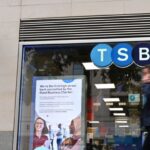Snap Inc, owner of popular messaging service Snapchat, made many of its financial details public for the first time on Thursday, as it prepared to raise up to $3 billion in an initial public offering in New York that is expected to come in March. The disclosure was Snap’s opening salvo in convincing investors that the company, which launched in 2012 as a free mobile app with disappearing messages, has come up with a sustainable business model despite increasing losses. Snap had confidentially registered with the U.S. Securities and Exchange Commission late last year and kept the prospectus under such tight wraps that even some of its IPO underwriters had not seen it prior to publication on Thursday, sources familiar with the matter told Reuters. Snap said in the IPO registration document published on Thursday it would become the first U.S. company to go public with shares on offer not granting voting rights to stock market investors. Its founders, Evan Spiegel and Robert Murphy, will keep control of the company. Snap could be valued at between $20 billion to $25 billion, sources familiar with the situation who asked not to be named because the matter is confidential have said. That would give the company the richest valuation in a U.S. technology IPO since Facebook Inc. Snap, which described itself as a camera company in the IPO prospectus, started selling $130 video camera glasses last year. It has also sought to bulk up revenues from advertising, where it generates the majority of its revenue. Snap had $404.5 million in sales in 2016, up from $58.7 million in 2015. However, it had a net loss of $514.6 million in 2016, up from a net loss of $372.9 million in 2015. It had adjusted losses before interest, tax, depreciation and amortization last year of $459 million, up from $292 million the year before. Snap had 158 million active users in 2016, up 48 percent from 2015. Facebook’s Instagram, which recently introduced disappearing video content similar to Snapchat, had 600 million users as of late last year. Like Snapchat, Instagram sells advertising on its platform. Snap pointed to a decline in the growth rate of its user base as a risk, as well as its reliance on Google Cloud and certain operating systems. All companies must include risk factors in their prospectus, and the first ones listed are often those of most concern. TIGHT CONTROL Spiegel, the 26-year-old Snap co-founder, last year earned $503,205 in salary, with a $1 million bonus. Imran Khan, Snapchat’s chief strategy officer whom it hired from investment bank Credit Suisse Group AG in 2014, earned $241,539 last year with a $5.2 million bonus. Spiegel and Murphy will maintain tight control over Snap’s stock through a unique three-share class structure. The structure will give Spiegel and Murphy the right of 10 votes for every share. Existing investors will have one vote for each of their shares, while new investors will have no voting rights. Keeping tight control is common in companies closely associated with their founders, who often prefer to grow their business without being questioned by a broad array of investors. Still, offering a class of stock with no votes in an IPO is unprecedented. Though the structure has drawn some criticism for not giving stock market investors the opportunity to have input, some people close to the company have argued that investors can “vote with their feet” by not buying into the IPO if they are not comfortable with the arrangements. By the end of last year, Snap had increased its number of employees to 1,859 from 600 in 2015 as it aggressively expanded its business. Snap said it would use the proceeds from its IPO for general purposes, including working capital, operating expenses and capital expenditures. Snap said it will list on the New York Stock Exchange under the ticker SNAP.
















